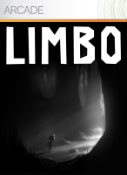
Thanks to services such as XBLA, WiiWare, and PSN, the gaming community has seen plenty of incredible creations that may never have reached gamers otherwise. Some of the best gaming titles to release on all three of the services have come from independent game developers. Their passion and freedom to create have amazed gamers, producing critically acclaimed titles, such as World of Goo. Limbo is yet another example of a unique title brought to life by an independent developer; in this case, the Danish based PlayDead Studios. While the game is an original concept filled with many good aspects, Limbo is far from perfect and certainly won’t appeal to everyone.

The incredible art style was the first thing that grabbed my interest for Limbo. The shadowy black and white world created a sad yet eerie backdrop for the puzzle-platformer. The appearance of the main character only adds to the mysterious feeling as he is nothing more than a dark figure with piercing bright white eyes. As players venture into the world the mysterious becomes violent, as images of dead bodies swinging in mid air and disgusting creatures fill the screen.
With so much potential for personality, Limbo sadly falls a bit flat here. I was a bit disheartened at the lack of any type of soundtrack, or at least consistent sound effects. Something about a creepy world filled with unsettling things around each corner begged for the proper accompanying music. However, the dark world that players will spend the first half of the game in comes to a screeching end, as players are driven into an underground area which they will remain in until the game’s end.

At that point, every intriguing occurrence players witnessed above land is replaced in favor of a hollow world filled only with back-to-back obstacles and challenges. It was at this point that Limbo lost my attention, as one of the largest hooks of the game, the artistic environment, was forgotten.
Not only did the presentation lose significant appeal during the second half, but the puzzles did as well. To be fair, I must admit that the majority of puzzles found in Limbo are very creative, but the execution of them did not appeal to me.

Unlike most other puzzle games, Limbo is not split into levels or sections for players to complete sequentially. Rather, Limbo is one continuous experience in which players will encounter challenge after challenge. My issue with many of these puzzles, though creative, is that they are completed through trial and error rather than thought and skill, requiring players to forcibly fail, potentially several times before they understand the exact order in which they must perform specific actions.
The developers went to painstaking lengths to ensure that most challenges be completed in one specific manner. For example, a particular puzzle requires players to raise water levels and jump on logs or boxes in order to stay out of it. If players jump too early onto one of the platforms, a strategically placed set of spikes will kill players for doing nothing more than jumping onto the rising box, that must be jumped on anyway, a second too soon.

Absolute precision in particular puzzles becomes increasingly frustrating towards the end of the game, where players are not given even a second or an inch buffer for error. Every puzzle must be completed to perfection, and since no puzzle in Limbo is merely one step, this requires players to perfect each step or try, try again. Thankfully, Limbo checkpoints often, including after every challenge and many times during a particularly intricate or lengthy one.
For all of the precision and trial-by-error puzzles, the first half of the game offers up a number of challenges that are both creatively done and intelligent given the environment of the game. The unfortunate part is that half of the game means a mere hour to an hour-and-a-half. I can understand a game being short and sweet, but Limbo feels like a glorified level-turned game.

The story is also extremely frustrating as it starts off with such intrigue, and like the puzzles and environment, drops off at the half-way point. A variety of things are out to kill you in this first half, and given the desolate and bleak world, it’s unclear as to why. Furthermore, there is general intrigue as to exactly where you are. Once you go underground, there is only one story piece presented, as well as the conclusion of the game, which gives a false sense of depth.
Many people will try to argue that there is depth in the ambiguity of the game, but in the end, the story was just poor, and an opportunity was squandered in trying to describe and reveal the bizarre world created by the developers.
Considering all of these elements, Limbo is clearly a game that will appeal to some, but not appeal to many others. Those who do not enjoy redoing tasks several times will easily become frustrated, and should avoid the game altogether, whereas those who seek a challenge that focuses on perfection will undoubtedly be entertained. However, the poor execution of the story and the short length of the game may even dissuade those who wouldn’t mind the puzzle experience provided here.


















Comments